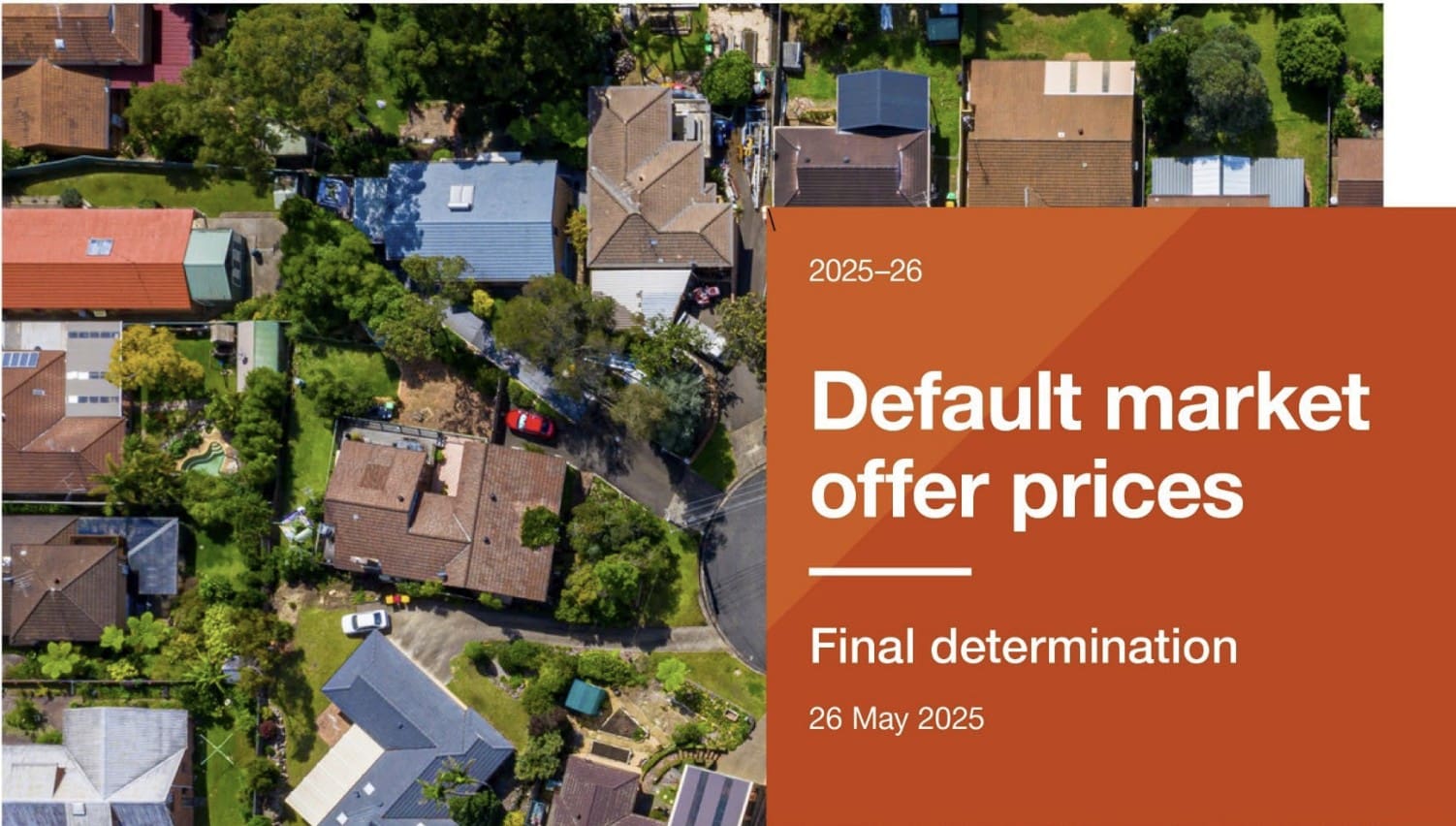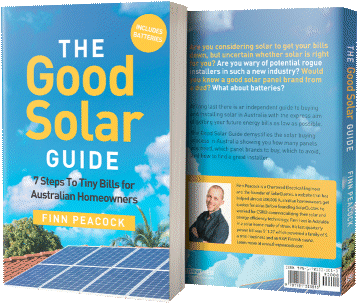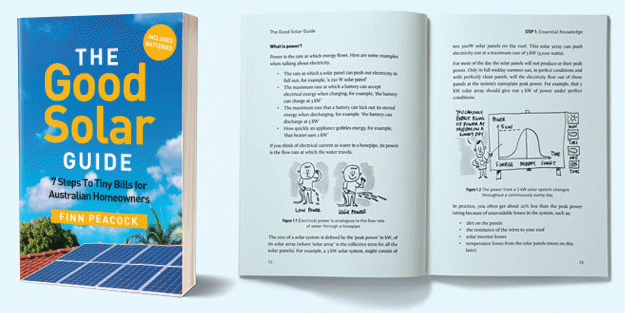 Electricity bills are set to surge by up to 9.7% for some Australians from July, according to the latest reference price details released by the Australian Energy Regulator, although most households will see smaller increases.
Electricity bills are set to surge by up to 9.7% for some Australians from July, according to the latest reference price details released by the Australian Energy Regulator, although most households will see smaller increases.
The Australian Energy Regulator has revealed the final Default Market Offer (DMO) for over half a million households and small businesses in NSW, south-east Queensland, and South Australia from 1 July, while Victorians are also going to see an increase.
The DMO acts as a benchmark for residential and small business electricity bills in the above states.
The Victorian Default Offer, set by the Essential Services Commission, has also been released. There are approximately 348,000 Victorian households and 55,000 small business customers currently on the Victorian Default Offer.

The front cover for the AER’s final determination report on DMO prices.
Electricity Price Rises In NSW
In NSW, the NSW Roadmap cost increases and higher transmission costs are helping drive increases.
- Residential customers without controlled load will see price increases of 8.5% to 9.1%;
- Customers with controlled load will see price increases of 8.3% to 9.7%;
- Small business customers will see increases of 7.9% to 8.5%.
Electricity Price Rises In SE Queensland
In SE Queensland, increases are offset by the return of previously overrecovered revenues, and decreases in costs for Queensland residential customers with controlled load reflect lower prices for controlled load tariffs.
- Residential customers without controlled load will see price increases of 3.7%;
- Customers with controlled load will see price increases of 0.5%;
- Small business customers will see increases of 0.8%.
Electricity Price Rises In South Australia
In South Australia, increases were partly linked to expenditure to improve the management of safety risks to the public and workers. Increases are partially offset by the return of previously over-recovered revenues, and reduced allocation of transmission costs to the residential flat rate tariff.
- Residential customers without controlled load will see price increases of 3.2%;
- Customers with controlled load will see price increases of 2.3%.
Electricity Price Rises In Victoria
The Victorian Default Offer, which is set separately, is also set to increase, according to the state’s Essential Services Commission. This increase is primarily driven by higher network and wholesale electricity costs, and is partially offset by lower environmental costs.
- For residential customers on the Victorian Default Offer, changes to annual prices vary, dropping by $26 in one distribution zone but increasing by between $4 and $90 in others, compared to 2024–25. The average across the five zones is a 1% increase, or $20, on last year;
- For small businesses on the Victorian Default Offer, annual prices would increase across the five distribution zones by between $10 and $177, compared to 2024–25. The average across the five zones is a 3% ($90) increase on last year.
What About Other States?
The Tasmanian Economic Regulator earlier this month announced electricity prices are set to go up by about 2%.
In the ACT, ActewAGL’s standing offer will rise by an average of 10.11% from July, mainly driven by the increase in wholesale electricity costs, network costs and the ACT Government’s large-scale feed-in tariff (LFiT) scheme costs.
In Western Australia, regulated electricity prices are determined by the State Government annually as part of the State Budget, which will be handed down in June.
Shop Around For A Better Deal
AER Chair Clare Savage said the increases were a difficult decision, but observed that better deals than the DMO are available:
“We know this is not welcome news for consumers in the current cost-of-living environment. As noted in our draft determination, sustained pressures across almost all components of the DMO have driven these price rises, with wholesale and network costs rising in most jurisdictions between 1% and 11%, and retail costs between 8% and 35% compared with last year… I strongly encourage all consumers to avoid staying on an old or uncompetitive plan. Contact your retailer to see if you can get a better offer or shop around. At least every 100 days your retailer must tell you on the front page of your bill if they can offer you a better deal.”
Federal Minister for Climate Change and Energy Chris Bowen echoed this point, noting that although the DMO is the benchmark for standard offers from retailers, the AER has recorded significantly lower market offers:
“With energy plans that are between 18% and 27% cheaper than the DMO it’s worth shopping around. It’s clear energy bills for Australians remain too high, and we’re providing help for people doing it tough as we deliver longer term reform. We also know 80% of households aren’t on the cheapest energy plan they could be which is why we’re making it easier for households to find and switch to better plans. Check the Energy Made Easy website or energy.gov.au for the cheapest plans in your area.”
The federal government has urged households to check that they’re on the cheapest energy plan available, with recent ACCC data showing some 80% of households could be paying less on a different deal.

SolarQuotes’ electricity plan comparison tool.
Calculate The Difference
To shop around for a better deal, you can use our electricity comparison plan tool, which also includes solar feed-in-tariffs.
To cut bills further, solar and/or a home battery could be an option. To work out how much they could reduce your electricity bills, try our Solar & Battery Calculator, which was recently updated to factor in the new federal battery rebate. We’ve also released a new video on the best batteries available in 2025, as chosen by installers.

 RSS - Posts
RSS - Posts



So the best advice is to shop around – which doesn’t help at all if you live in WA. 🙁
True, WA has so far chosen to not insert a private corporate layer into the middle of the energy industry. Middle layers in any industry (energy, health, NBN, etc.) require lower wholesale prices and/or higher retail prices to cover the middle layer’s unquenchable thirst for profit. The energy industry in WA has largely remained a State-owned concern because, years ago, no one wanted to purchase the grid in the vast unprofitable areas outside the Perth metro area. They only wanted the metro cash cow.
At least in WA when the electricity price goes up their taxpayers know the money will go to WA things – hospitals, schools, grants to charities, and infrastructure including roads and the electricity grid itself. It doesn’t go to companies who spend more money on the widespread corporate shell game to shift profits and pay negligible tax here.
The entire pollie cop-out about shopping around is tiresome. They don’t mean just shop around. They mean shop around every six months forever or you’ll get fleeced.
If pollies and retailers love privatisation so much, how about THEY do the shopping around for customers.
We have a DMO now, how about creating a RDMO (real default market offer).
I’d like to sign up for a generic category, say, medium use, solar, controlled load, SEQ. Retailers then bid every six months for the entire pool of customers on that RDMO – automatically switched. That’s real market competition.
One characteristic of a healthy market is that occasionally some participants go bust. Electricity retailing just seems to attract more and more vultures.
Hi Glen,
It sounds like you’re making a case for grasping the nettle and re-nationalising electricity. Great idea if you ask me.
However the best idea in the interim is to use this comparison service. Pay your subscription and they promise they’ll save you more than it costs.
Set up automatic forwarding of your bills and they’ll let you know when better deals crop up.
https://www.billhero.com.au/
Full disclosure, if somebody signs up using the code below, both they and myself will get an additional two months of Bill Hero for free.
bh11811-nmp1668684689
If the wholesale price of power is going up, how come our FIT’S are not increasing as well?
Hi Mark,
We addressed a few of those issues here. The transition is still rapidly changing things but daytime energy is a bit worthless until we get more storage online.
https://www.solarquotes.com.au/blog/stealing-electricity/
Electricity Price Rises In NSW – It’s time solar panel owners be paid more of exports to grid. The Retailers are justifying the price hike for update on infrastructure. Look outside your house and surrounding how many upgrades have been done in your surroundings. None so far for 20 or 30 years yet you are paying daily supply charge of around $1.10 a day. This daily supply charge fee is the upgrade costs yet nothing upgraded for 20 or 30 years.
There is no savings when Feed In Tariffs are reduced which forces Roof Panel Owners to purchase battery. This is a dirty scheme by Govt and Retailers forcing Solar Panel Owners into something that is not required.
Increase feed in Tariff should be the way to go.
Get a Solicitor who can take on the Government and Retailers to Court for Class Action for theft of Feed in Tariffs.
Regards Ronnal Sharma
More storage online is a federal government issue and not customers. The Federal Government is a guarantee to have all households supplied with power. That is something not a customer has to pay for upgrade. Customers are paying daily supply charge of $1.10 inclusive of GST.
I for one think our captured regulators will NEVER tame our privatised oligopoly. I used to work for an investment bank in derivatives and the sorts of quantitative analysts they hire (like I was) and legal minds in pursuit of profit give them a razor-sharp edge over the pedestrian types at the regulator.
If the regulation was any good, energy generation prices would closely track the BASKET COST of the generation mix EVEN during peaking when peaker competition was weak. But the regulators blindly rely on the assumption that the market is competitive (very false) and automatically delivers this economically efficient result (complete bollocks). 5% of our energy mix (gas) basically distorts the average beyond any connection with underlying costs.
Consequently folks, our only way out is our own solar and batteries. Thank heaven batteries are finally getting economically feasible. Sorry, if you’re a renter or in strata, you’re doomed.
Got my price increase from CovaU this morning, can’t do much about it. At least they retained FIT at 5.5c/kWh.
I believe SAPN have extended the shoulder time from 10 to 4pm from July 1.
I wonder how many retailers to SA will adjust the SHOULDER rate so it ends at 4pm